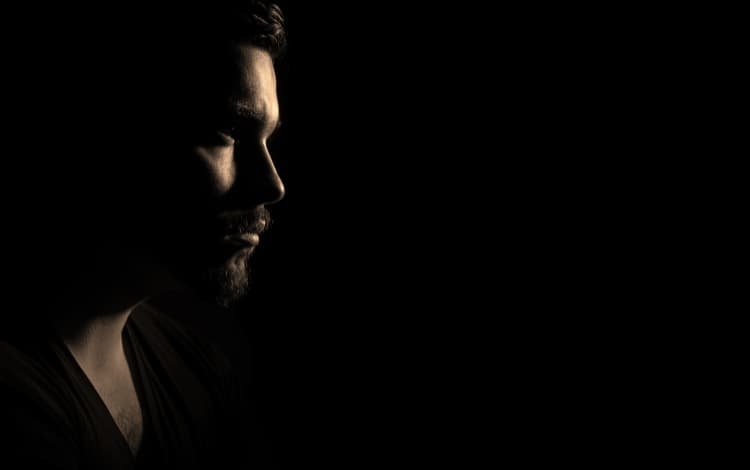Gay Conversion Therapy: The Devastating Illusion I've Witnessed Firsthand
The heartbreaking aftermath of attempting to "fix" what was never broken.
After alost two decades as a gay therapist, I've seen the wreckage conversion therapy leaves behind. Nothing prepares you for sitting across from someone who's been told their core identity is a disease to be cured.
When "Help" Actually Hurts
Last month, a new client—I'll call him Marco—sat in my office, eyes fixed on the floor. At 32, he'd spent nearly a decade in various conversion programs. "I just wanted to be normal," he whispered. "I thought if I tried hard enough, prayed hard enough..."
His voice trailed off, but I knew the rest. I've heard it hundreds of times.
Here's what haunts me: Marco isn't broken. He never was. But after years of being told otherwise, he believed he was fundamentally flawed. That belief nearly destroyed him.
And he's far from alone.
What Conversion Therapy Really Is
Let's drop the clinical language for a minute. Conversion therapy isn't therapy at all—it's psychological violence dressed up in therapeutic clothing.
Whether they call it "reparative therapy," "sexual reorientation," or the gentler-sounding " sexual orientation change efforts," it's all built on the same toxic lie: that being gay, lesbian, bisexual, or transgender is a disorder that needs fixing.
I've spent years helping people heal from this exact mindset. As both a gay man and a therapist, I find it infuriating how these practices violate every ethical standard we hold in mental health work.
What does it look like in practice? Sometimes, it's dressed up as "counseling" that pathologizes same-sex attraction. Sometimes, it's brutal—aversion techniques, physical punishment, or even forced sexual encounters with the opposite sex (which is, let's be absolutely clear, sexual assault).
And it persists despite overwhelming evidence that it causes profound harm.
The Science is Clear: It Doesn't Work
I remember when I first started practicing, there was still debate about this in some circles. Not anymore.
The research is conclusive: conversion therapy doesn't change sexual orientation or gender identity. Full stop.
Every major health organization has condemned it. The Human Rights Campaign, Cornell University researchers, the Minnesota Department of Health, the UK government, the American Academy of Child and Adolescent Psychiatry, the American Psychiatric Association—they've all reviewed the evidence and reached the same conclusion.
It doesn't work. It never worked. And it damages people—sometimes irreparably.
I've seen clients who've lost decades of their lives to these practices. Years they'll never get back, pursuing a "cure" for something that was never a disease.
The Legal Landscape: Progress and Persistent Gaps
When I started counseling LGBTQ+ clients, conversion therapy was widely practiced with little opposition. Today, 26 countries have restrictions against it, which means most of the world still allows it.
Eleven countries, including Canada, France, and Spain, have comprehensive bans. Eight more prohibit medical professionals from practicing it. Seven have indirect bans that prevent diagnosing someone based solely on orientation or identity.
Some regions of Australia, Mexico, and the United States have also implemented bans. However, the patchwork protection leaves countless vulnerable people exposed to these damaging practices.
What breaks my heart is knowing that right now, as you read this, someone is being subjected to conversion therapy. Someone is being told their identity is a sickness. Someone is learning to hate themselves.
And that's why organizations like The Trevor Project, GLAAD, Stonewall, and The Human Rights Campaign are so vital. Their advocacy work exposes these practices and pushes for legislation to end them for good.
The Historical Context: Outdated Science
Conversion therapy arose during the early 1900s when homosexuality was wrongly classified as a mental illness or moral failing. It was practiced by medical doctors, psychiatrists, and religious leaders who viewed it as a disorder to be treated.
But science evolves. Our understanding grows. And we now know better.
The American Psychological Association and the World Health Organization have both rejected the premises that conversion therapy was built upon. They recognize it for what it is: ineffective, unethical, and harmful pseudoscience rooted in discrimination and homophobia.
Yet despite this scientific consensus, these practices persist—often cloaked in religious language about "healing" and "restoration."
The Devastating Impact I've Witnessed
In my practice, I've worked with dozens of conversion therapy survivors. Their stories haunt me.
There was David, who underwent electric shock therapy as a teenager. Ten years later, he still couldn't form intimate relationships without panic attacks.
Or Georgio, who spent years in a "pray away the gay" program that left him with such severe religious trauma he couldn't enter a church without dissociating.
Or Tyler, who attempted suicide three times after conversion therapy reinforced the belief that his identity was unacceptable to his family and God.
The research backs up what I've seen firsthand:
It dramatically increases anxiety, depression, and suicidal ideation
It reinforces self-hatred and internalized homophobia
It damages the capacity for healthy relationships
It creates profound religious trauma and spiritual wounds
It robs people of years they could have spent living authentically
And for what? For an outcome that research consistently shows is impossible to achieve.
The Methods: A Toolbox of Trauma
The specific practices used in conversion therapy range from seemingly benign to overtly abusive. They include:
Psychotherapy designed to reshape "unwanted" attraction, including hypnosis to instill "proper" gender roles.
Counterconditioning (aversion therapy) that pairs same-sex attraction with unpleasant stimuli—including electrical shocks or nausea-inducing medications.
Medical interventions , including hormones or steroids.
Spiritual methods like intensive prayer, exorcisms, or counseling focused on "sexual brokenness."
Visualization exercises and other cognitive techniques to rewire attraction.
Shame-based approaches that deliberately cultivate self-loathing.
And in the most extreme cases, physical violence and deprivation.
Each of these approaches shares a common thread: they treat intrinsic aspects of human identity as pathology.
The Alternative: Affirmative Therapy That Heals
The most heartbreaking thing I hear from conversion therapy survivors is: "I didn't know there was another way."
There is.
LGBTQ-affirmative therapy approaches sexuality and gender with compassion, validation, and respect for human diversity. It recognizes that the problem isn't the person's identity—it's the oppressive social context that pathologizes that identity.
In my practice, this means:
Validating clients' sexual orientation and gender identity as normal, healthy aspects of who they are.
Recognizing how heteronormativity and cisnormativity impact mental health.
Acknowledging the unique stressors that come with minority status.
Helping clients recognize and challenge internalized negative beliefs.
Creating space for authentic self-expression without judgment.
Advocating for clients across all domains of life.
The difference in outcomes is night and day. I've watched clients transform from deeply wounded survivors to thriving individuals who embrace their whole selves.
That journey isn't always linear or easy—but it's healing, not harming.
How To Fight Back Against Conversion Therapy
Sometimes people ask me, "What can I do about this issue?" Here's what I tell them:
Educate yourself and others. Understanding the harm of conversion therapy and the importance of LGBTQ+ rights creates the foundation for meaningful conversations that challenge misconceptions.
Support those affected. If someone you know has experienced conversion therapy or is considering it, listen with empathy and without judgment. Sometimes being truly heard is the first step toward healing.
Share resources. Organizations like The Trevor Project, PFLAG, and ILGA-Europe offer lifelines for those struggling. A single phone number or website can literally save a life.
Advocate for change. Support groups working to ban conversion therapy and advance equality. Speak out against these practices in your community. Your voice matters.
Be a consistent ally. Challenge discriminatory attitudes when you encounter them. Create spaces where diversity is celebrated, not merely tolerated.
These actions may seem small, but they create ripples that can transform lives. I've seen it happen.
A Personal Note
As both a gay man and a therapist, this issue isn't just professional for me—it's deeply personal.
I know what it's like to struggle with accepting your sexuality in a world that often tells you it's wrong. I understand the powerful longing to be "normal," to fit in, to be accepted by family and faith communities.
But I also know the profound freedom that comes with embracing your authentic self. I've lived it. And I've had the privilege of witnessing hundreds of clients discover that same freedom.
Conversion therapy steals that possibility. It replaces self-discovery with self-destruction. It substitutes shame for acceptance. And it does lasting damage to the human spirit.
We can do better. We must do better.
If you're an LGBTQ+ person who has experienced conversion therapy—or if you're struggling with accepting your sexuality or gender identity—please know this: You are not broken. You don't need fixing. And healing is possible.
Support exists, both from affirming professionals and community organizations. It's never too late to begin the journey toward self-acceptance and authentic living.
Together, we can stand against practices that harm and create a world where everyone can live openly as their true selves.
Break Free from Conversion Therapy's Damaging Legacy
Has conversion therapy left you feeling broken, confused, or disconnected from your true self? You're not alone—and there is a path forward.
Working with a therapist who specializes in LGBTQ+ issues can help you:
Process and heal from conversion therapy trauma
Rebuild your sense of identity and self-worth
Develop healthy relationships with yourself and others
Navigate complex feelings about sexuality, faith, and family
Create a life aligned with your authentic self
Don't let conversion therapy's harmful messages define your future. Reclaim your narrative and discover the freedom of living authentically.
Contact me today for a confidential online session.
* Any names or identifiable descriptions of people have been altered to maintain confidentiality.
By Gino Cosme
Gino is a gay therapist working online with English-speaking gay men across Europe, the UK, the USA, Australia, Ghana, Canada, and South Africa.





